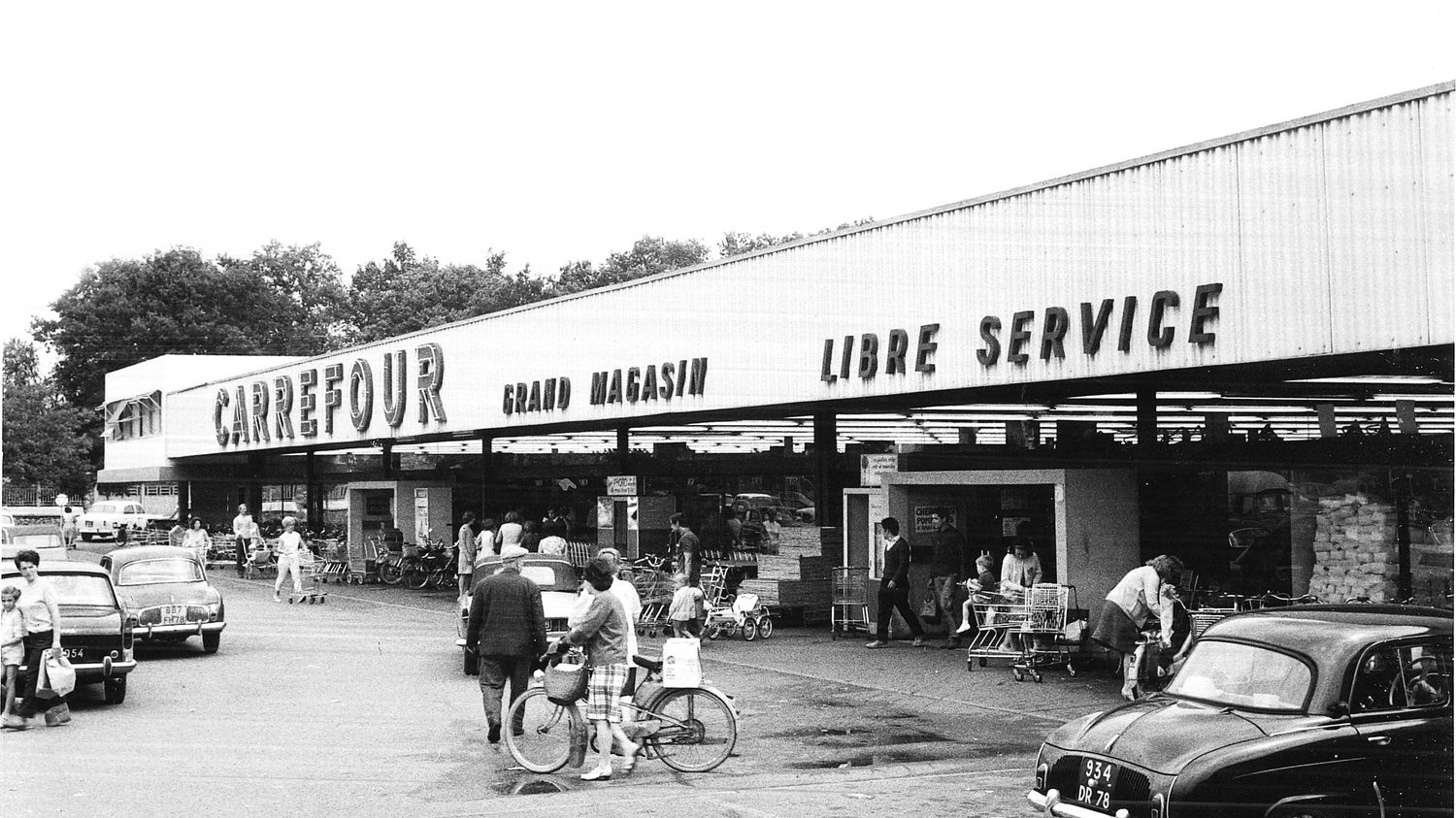On June 15, 1963, the first hypermarket opened its doors in France. 60 years later, battered by e-commerce, hypermarkets are benefiting from the effects of inflation. Attendance is no longer falling, with nearly 80 billion euros in turnover this year.
This week, Carrefour celebrated the anniversary of the first hypermarket. It was in Sainte-Geneviève-des Bois in Essonne. Never seen. Imagine 2500 m2 of abundance, tight prices. And for the first time, we can touch the products. It was unthinkable in a classic 1963 grocery store, and to buy more and more easily, customers discover the trolley that will become the shopping cart.
franceinfo: It’s the start of a crazy adventure, the formula will snowball!
15 years later, there are almost 350 hypermarkets in France. 2,300 today. They are nicknamed factories for sale, they are getting bigger and bigger, with some records. We are close to 30,000 m2 in Villiers-en-Bière in Seine-et-Marne.
The principle is a store that sells everything under the same roof: food, non-food, and everyone comes there to do their shopping. Young people or a little less, families, wealthy or modest households, the French love it… Until the 2000s.
Why this reversal, what causes this disenchantment?
From the 1990s, there was something more attractive: hard discount. Then, online shopping which seems so much more practical, and then local shops become the champions of quality, hypermarkets are considered too big, too far away: it’s a chore, you waste your time, almost your soul . By frequenting them, customers have the feeling of over-consuming, of wasting.
This is the height of corniness for 18-25 year olds, who no longer want it. In 20 years, the model has lost 15 points of market share, along with its cheerful and modern consumer image.
That’s final? Are hypermarkets really a thing of the past?
The announced death of hypermarkets was obvious, but it is no longer quite the case. Imagine that it is perhaps inflation that comes to the aid of these temples of consumption. Attendance is no longer dropping today.
Customers come looking for low prices, promotions and above all distributor brands, which are more affordable than the national brands which are soaring, and when the price of fuel soars, it’s interesting to group your shopping. And then the distributors felt the wind turn: they reduced the surface areas of their hypermarkets, they refocused on the food department by reducing the non-food items sold on the Internet to corners: fashion, bicycles, tires, large household appliances.
Result: nearly 80 billion euros in turnover this year, all the same, and 9 out of 10 French people on the shelves of hypermarkets at least once a year. Finally, things are still going pretty well for the carts!
